Gearing Up With CNC Grinding
By adding a CNC OD/ID grinder, this California gear manufacturer brought a lot of farmed-out work in house, improved quality, slashed lead times—and saved money.
Share




Takumi USA
Featured Content
View More

Autodesk, Inc.
Featured Content
View More
ECi Software Solutions, Inc.
Featured Content
View More

Gear Manufacturing, Inc., Anaheim, California, produces high quality gears for aerospace, medical, oilfield, high-performance automotive and other applications. The 12-year-old firm specializes in precision ground gears, in relatively small quantities (10 to 500 pieces). The company is all about grinding gears to exacting standards. "A lot of gear manufacturers don't grind their gears," explains Gary Smith, president of the firm. "We do."
Mr. Smith started Gear Manufacturing with mostly manual equipment he purchased from a gear manufacturing firm that was going out of business. He began replacing some of the older equipment with CNC machines as opportunity allowed. However, Gear Manufacturing still needed some key pieces of equipment.
In particular, the company lacked the production OD or ID grinders needed to grind the turned and milled gear blanks to a precise size and finish. Mr. Smith overcame the problem by farming out the OD and ID grinding work to several nearby grinding sources. The arrangement satisfied the company's needs in the early going, and in fact conformed with Mr. Smith's views about cultivating vendors as a resource. However, as the company grew, it encountered some drawbacks with the arrangement.
"When we would farm out a part for multiple grinding operations, the vendor would first grind the ODs of all the parts on one grinding machine, the faces of the parts on another machine, and the IDs on still a third," Mr. Smith begins. "Having to farm out the work stretched our typical 12- to 18-week delivery to as much as 20 to 24 weeks, particularly when our vendors were busy. We couldn't do anything with the parts until we got them back from the vendor, and when we got them back, invariably there was some slight error—due mainly to the different operations performed on different machines—that transferred into the gear."
Expensive
"Some of our vendors would run our work on CNC grinders with high hourly rates, so having the work done outside became expensive," says Brian Stout, operations manager for the firm. "At one point, we were spending close to $250,000 per year on outside grinding."
One day, the firm received an order for a job that required a type of OD grinding that was beyond the capability of the firm's existing grinding sources. The part called for a number of semicircular grooves to be ground in its OD using a form wheel that would have to be dressed using a diamond wheel dresser. Instead of trying to find still another vendor that could handle the job, the firm decided to do the job in-house. GMI was about to purchase its first CNC production grinder.
Mr. Smith thought long and hard about the type of grinder needed for the job and decided on the Studer S30 CNC OD/ID grinder sold by United Grinding Technologies. "We could have purchased just an ID machine or an OD machine, but we wanted a more universal machine," he explains. "We wanted our first CNC grinder to be a machine that could do it all—OD grinding, ID grinding and facing—in the same setup. Where our grinding sources would typically perform the various grinding operations one at a time, often on different machines, usually with some discrepancies, our new OD/ID grinder can perform all of the grinding operations in a single setup. That ensures that all the ODs, IDs and faces will be dead true and that we will get consistent results with little or no error."
The Studer S30 CNC grinder (photo above, right) has a turret that rotates in a horizontal plane to present two large OD wheels and a small high speed ID wheel to the workpiece in turn. The sequence of photos shows a winch drum being ground on its OD, faced, and ground on its ID in the same setup. The winch drum is the part mentioned earlier that requires a series of semicircular grooves ground in its OD. The grooves are ground using a formed wheel that must be dressed frequently.
After the grooves are formed in the gear, the turret indexes to present a double-angled facing wheel to the front face of the gear. (The photo shows the blue facing wheel indexed into position, with the OD wheel still visible in the background.) Although both of the large wheels appear difficult to install, they are easily accessed from a door at the side of the machine. Finally, the turret indexes again to present the high speed ID wheel to the main bore. Before the ID grinding begins, the wheel is dressed by the stationary single point diamond dresser visible in the foreground.
"Had we been able to farm out this job, our vendors would have performed the OD operations on all of the parts, then the facing operations on all the parts, and finally the ID operations. We could not have processed any of the parts until the vendor finished all of them," Mr. Smith emphasizes. "With our OD/ID grinder, however, we can grind some blanks complete the first day, and we can be thread grinding or gear grinding them the next day. It enables us to have a job running simultaneously on two or three machines at the same time, which reduces our lead times dramatically—in some cases to as little as 4 to 6 weeks.
"Many of our orders involve relatively small quantities, which in turn require frequent setups," Mr. Smith continues. "The OD/ID grinder's CNC control, with its dedicated graphics-based programming software, enables us to program parts right at the machine and to go from one job to the next without a lot of downtime."
In fact, the firm is "geared" to small-lot production, which avoids a lot of work-in-process, satisfies those customers with just-in-time delivery requirements, and keeps inventory costs down. "We have some long-term orders involving thousands of pieces," Mr. Smith adds. "We could run them all at once, but we prefer to make them in smaller lots to avoid the inventory costs. We can set up our CNC machines for the next job so quickly and easily that it is less expensive to set up for small lots than to carry the inventory costs for the whole run."
Before, minor grinding inaccuracies by vendors would result in inconsistencies in the finished gears. With the OD/ID grinder, there are fewer inaccuracies because critical features are ground in one setup on one machine. As a result, ground gears are more consistent part to part, and overall quality is improved. "We find ourselves able to tighten up on all of our dimensions," Mr. Smith notes. "That's an important competitive advantage since it allows us to control certain features of our gears more tightly than other shops. For example, if the print calls for a ±0.002-inch tolerance on a diameter, we might grind it to plus or minus two tenths (0.0002)."
Of course, for some jobs that level of precision is essential. As if to underscore the point, Mr. Smith points to a print dimension that must be held to +0/-0.0001 inch. Measuring whether the dimension is within specs required an understanding between Gear Manufacturing and its customer about the inspection procedure and even the temperature at which to do it.
They Notice
The OD/ID grinder also boosts the way that the firm looks to existing and potential customers. Mr. Smith reports that visitors notice the newer CNC machines and that they come away with a positive impression of the capabilities of the company. "In the last 3 or 4 months, several large companies have visited for the purpose of surveying our capabilities, and they went away impressed," he notes with pride.
GMI is still committed to its strategy of farming out work to contract machine shops, but now the decisions are made based on cost and convenience rather than necessity. "The OD/ID grinder was definitely a missing link," Mr. Stout sums up. "It gives us just about all the production grinding capability we needed. Now, when we send work outside, it won't be because we don't have the in-house capability."
Related Content
Lean Approach to Automated Machine Tending Delivers Quicker Paths to Success
Almost any shop can automate at least some of its production, even in low-volume, high-mix applications. The key to getting started is finding the simplest solutions that fit your requirements. It helps to work with an automation partner that understands your needs.
Read MoreOrthopedic Event Discusses Manufacturing Strategies
At the seminar, representatives from multiple companies discussed strategies for making orthopedic devices accurately and efficiently.
Read MoreHow to Mitigate Chatter to Boost Machining Rates
There are usually better solutions to chatter than just reducing the feed rate. Through vibration analysis, the chatter problem can be solved, enabling much higher metal removal rates, better quality and longer tool life.
Read MoreHow to Determine the Currently Active Work Offset Number
Determining the currently active work offset number is practical when the program zero point is changing between workpieces in a production run.
Read MoreRead Next
5 Rules of Thumb for Buying CNC Machine Tools
Use these tips to carefully plan your machine tool purchases and to avoid regretting your decision later.
Read MoreRegistration Now Open for the Precision Machining Technology Show (PMTS) 2025
The precision machining industry’s premier event returns to Cleveland, OH, April 1-3.
Read MoreBuilding Out a Foundation for Student Machinists
Autodesk and Haas have teamed up to produce an introductory course for students that covers the basics of CAD, CAM and CNC while providing them with a portfolio part.
Read More




.png;maxWidth=150)




















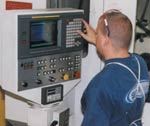
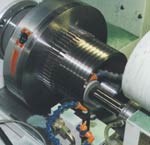
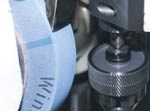

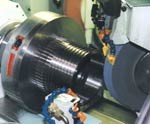
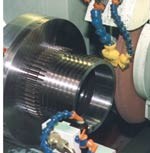







.jpg;maxWidth=300;quality=90)


















